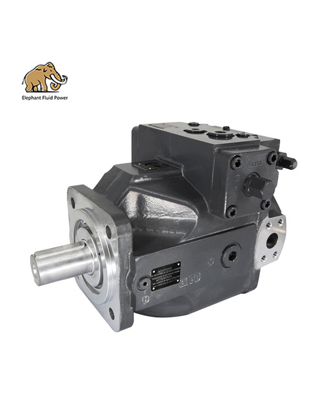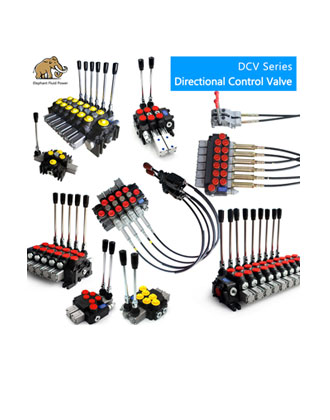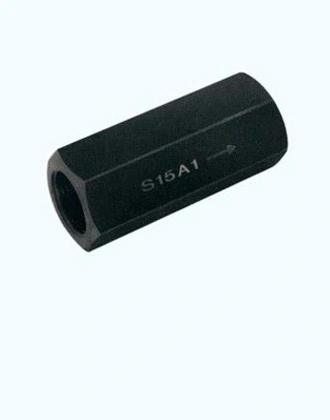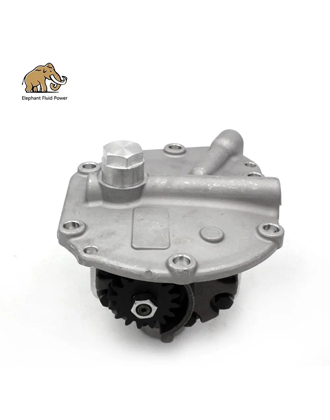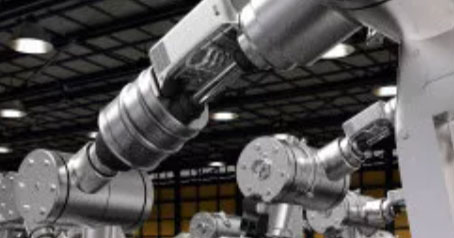The piston pump hydraulic system stands as a cornerstone of modern engineering, powering a wide range of applications across industries. From heavy machinery in construction to precision movements in manufacturing, understanding the dynamics of this system is crucial. In this blog, we'll delve deep into the components, working principles, and advantages of the piston pump hydraulic system.
Components of a Piston Pump Hydraulic System
At the heart of the system is the piston pump itself. This component uses reciprocating pistons to create a continuous flow of hydraulic fluid. As the pistons move, they create pressure differentials that draw in fluid during the suction stroke and push it out during the discharge stroke. The hydraulic reservoir stores the hydraulic fluid required for the system's operation. It also helps dissipate heat generated during operation, ensuring that the fluid remains at an optimal temperature for efficient performance. The hydraulic fluid, often an oil-based fluid, serves as the medium through which power is transmitted within the system. It transfers force from the pump to the actuator or motor and back, allowing for the conversion of mechanical power into hydraulic energy. Valves play a crucial role in controlling the direction, flow rate, and pressure of the hydraulic fluid. Directional control valves determine the path the fluid takes, while flow control valves regulate the speed of fluid flow. Pressure control valves, on the other hand, maintain the desired pressure levels within the system.
Working Principles of the Piston Pump Hydraulic System
The piston pump hydraulic system operates on Pascal's principle, which states that when pressure is applied to a fluid in an enclosed space, it is transmitted equally in all directions. Here's how the system works. During this phase, the piston draws hydraulic fluid from the reservoir into the pump chamber. The pressure in the chamber is lower than atmospheric pressure, causing fluid to flow into the chamber. As the piston moves in the opposite direction, it compresses the hydraulic fluid in the chamber. This compression increases the pressure of the fluid, causing it to be pushed out of the pump chamber and into the hydraulic circuit. The high-pressure hydraulic fluid flows through the system's components, including valves and actuators, to perform mechanical work. The actuators convert the hydraulic energy into the desired type of motion, whether linear or rotary.
Advantages of the Piston Pump Hydraulic System
Piston pumps can deliver high levels of power in a relatively compact form factor. This power density is crucial for applications where space is limited, such as in construction equipment. The system's ability to control the direction, speed, and force of motion with precision makes it suitable for tasks that demand accurate and controlled movements, like in robotics and manufacturing. With the integration of appropriate valves, the system can provide variable flow rates and pressure levels, allowing for versatile operation in different scenarios. Hydraulic systems, when properly maintained, are known for their durability and reliability, making them ideal for heavy-duty applications that require consistent performance.
Applications of the Piston Pump Hydraulic System
Hydraulic systems power heavy machinery like excavators, loaders, and bulldozers. The piston pump hydraulic system's ability to provide high force and precise control is essential for tasks involving excavation and material handling. Manufacturing processes often require controlled movements, such as in CNC machines and robotic arms. The piston pump hydraulic system ensures precise motion and enables complex tasks to be performed with accuracy. Hydraulic systems play a role in vehicles' power steering and braking mechanisms. The piston pump hydraulic system assists in providing responsive steering and efficient braking. In aerospace applications, hydraulic systems contribute to the operation of landing gear, flaps, and other critical components. Their reliability and ability to handle high pressures are vital in such demanding environments.
The piston pump hydraulic system represents a remarkable fusion of mechanical engineering and fluid dynamics. Its ability to transmit power, provide precise control, and operate reliably across a diverse range of applications underscores its significance in modern industrial processes. Whether it's lifting tons of earth at a construction site or delicately maneuvering components on an assembly line, the piston pump hydraulic system continues to shape industries and contribute to technological advancements.
 French
French
 Portuguese
Portuguese
 Russian
Russian
 German
German
 Spanish
Spanish
 Japanese
Japanese
 Korean
Korean
 Irish
Irish
 Greek
Greek
 Turkish
Turkish
 Italian
Italian
 Danish
Danish
 Romanian
Romanian
 Indonesian
Indonesian
 Czech
Czech
 Afrikaans
Afrikaans
 Swedish
Swedish
 Polish
Polish
 Basque
Basque
 Catalan
Catalan
 Esperanto
Esperanto
 Hindi
Hindi
 Lao
Lao
 Albanian
Albanian
 Amharic
Amharic
 Armenian
Armenian
 Azerbaijani
Azerbaijani
 Belarusian
Belarusian
 Bengali
Bengali
 Bosnian
Bosnian
 Bulgarian
Bulgarian
 Cebuano
Cebuano
 Chichewa
Chichewa
 Corsican
Corsican
 Croatian
Croatian
 Dutch
Dutch
 Estonian
Estonian
 Filipino
Filipino
 Finnish
Finnish
 Frisian
Frisian
 Galician
Galician
 Georgian
Georgian
 Gujarati
Gujarati
 Haitian
Haitian
 Hausa
Hausa
 Hawaiian
Hawaiian
 Hebrew
Hebrew
 Hmong
Hmong
 Hungarian
Hungarian
 Icelandic
Icelandic
 Igbo
Igbo
 Javanese
Javanese
 Kannada
Kannada
 Kazakh
Kazakh
 Khmer
Khmer
 Kurdish
Kurdish
 Kyrgyz
Kyrgyz
 Latin
Latin
 Latvian
Latvian
 Lithuanian
Lithuanian
 Luxembourg
Luxembourg
 Macedoniar
Macedoniar
 Malagasy
Malagasy
 Malay
Malay
 Malayalam
Malayalam
 Maltese
Maltese
 Maori
Maori
 Marathi
Marathi
 Mongolian
Mongolian
 Burmese
Burmese
 Nepali
Nepali
 Norwegian
Norwegian
 Pashto
Pashto
 Persian
Persian
 Punjabi
Punjabi
 Serbian
Serbian
 Sesotho
Sesotho
 Sinhala
Sinhala
 Slovak
Slovak
 Slovenian
Slovenian
 Somali
Somali
 Samoan
Samoan
 Scots Gaelic
Scots Gaelic
 Shona
Shona
 Sindhi
Sindhi
 Sundanese
Sundanese
 Swahili
Swahili
 Tajik
Tajik
 Tamil
Tamil
 Telugu
Telugu
 Thai
Thai
 Ukrainian
Ukrainian
 Urdu
Urdu
 Uzbek
Uzbek
 Vietnamese
Vietnamese
 Welsh
Welsh
 Xhosa
Xhosa
 Yiddish
Yiddish
 Yoruba
Yoruba
 Zulu
Zulu

